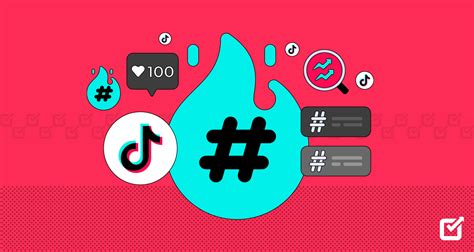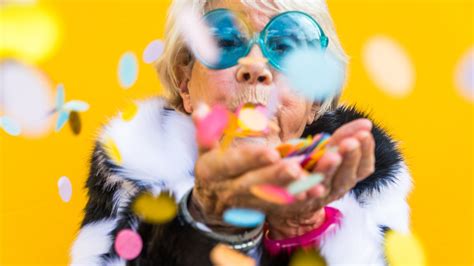
A viral TikTok trend, sparked by a user asking women about seemingly harmless experiences that made them realize the opposite sex might perceive the world differently, has resonated deeply, garnering millions of views and prompting widespread discussion online. Dubbed “The Wilde” question, referencing TikTok user @WildeThingss, the prompt has unearthed a plethora of shared anecdotes highlighting potential disparities in how men and women experience everyday life, from safety concerns to professional interactions.
The TikTok trend began when @WildeThingss posed a deceptively simple question: “What is something that you didn’t realize wasn’t normal for women until later in life?” The responses flooded in, revealing a common thread of experiences related to personal safety, societal expectations, and interactions with men that many women had normalized but, upon reflection, recognized as potentially problematic or indicative of a gendered difference in perception. The overwhelming volume and relatable nature of these shared experiences quickly propelled the trend to viral status.
Many of the responses focused on the precautions women routinely take to ensure their safety, such as constantly being aware of their surroundings, modifying their routes to avoid walking alone at night, holding their keys between their fingers as a potential weapon, or sending location updates to friends. These behaviors, often unconsciously ingrained from a young age, were revealed to be far from universal experiences. As one commenter noted, the realization that men don’t typically consider these safety measures was eye-opening. “I thought everyone did that,” was a common sentiment, highlighting the subtle but pervasive ways women navigate a world they often perceive as less safe.
The trend also unearthed anecdotes about professional interactions where women felt their ideas were dismissed or overlooked, only to be later adopted and praised when voiced by a male colleague. Others shared experiences of being interrupted or talked over in meetings, or of facing subtle but persistent forms of sexism in the workplace. These accounts underscored the ongoing challenges women face in achieving equality in professional settings and the microaggressions that can erode their confidence and hinder their career advancement.
Beyond safety and professional experiences, “The Wilde” question also triggered discussions about societal expectations and gender roles. Many women shared stories of being judged more harshly than men for their appearance, their choices in partners, or their decisions about motherhood. The pressure to conform to unrealistic beauty standards, the double standards in dating and relationships, and the societal expectations placed on women to prioritize family over career were all recurring themes in the responses.
The virality of “The Wilde” question underscores the power of social media to amplify marginalized voices and facilitate conversations about gender inequality. By providing a platform for women to share their experiences and connect with others who have similar stories, the trend has fostered a sense of solidarity and validation. It has also served as a valuable learning opportunity for men, offering insights into the everyday realities of women’s lives and prompting reflection on their own behaviors and assumptions.
The trend’s success lies in its simplicity and relatability. The question posed by @WildeThingss was open-ended and invited a wide range of responses, allowing women to share experiences both big and small. The anonymity of the internet also likely encouraged some women to be more candid than they might be in their personal lives.
Experts suggest that the trend is not just a fleeting online phenomenon but a reflection of deeper societal issues. “These types of conversations are important because they bring awareness to issues that many women face but may not always feel comfortable discussing openly,” says Dr. [Hypothetical Expert Name], a sociologist specializing in gender studies. “By sharing their experiences, women can empower each other and challenge the status quo.”
The “Wilde” question has sparked a wider conversation about gender dynamics and the subtle ways in which inequality manifests itself in everyday life. It serves as a reminder that while progress has been made, there is still much work to be done to create a more equitable and just society for all. The impact of this trend extends beyond the digital realm, encouraging individuals to examine their own biases and behaviors and to advocate for change in their communities and workplaces.
The prevalence of these shared experiences speaks to systemic inequalities that continue to affect women. The trend highlights the need for continued dialogue and action to address issues such as gender-based violence, workplace discrimination, and societal expectations that limit women’s opportunities and choices. The “Wilde” question serves as a catalyst for further exploration and understanding of the diverse experiences of women and the challenges they face in navigating a world that is still, in many ways, unequal. The conversation also extends to intersectionality, acknowledging that experiences vary greatly based on race, class, sexual orientation, and other factors. For example, women of color often face additional layers of discrimination and bias, which can further compound the challenges they encounter.
The viral trend has also prompted discussions on how to foster greater empathy and understanding between men and women. Some commentators have suggested that men can play a more active role in listening to women’s experiences, challenging sexist behavior, and advocating for gender equality. Others have emphasized the importance of education and awareness-raising initiatives to dismantle harmful stereotypes and promote a more inclusive and equitable society.
The “Wilde” question on TikTok is more than just a viral trend; it is a reflection of the ongoing struggle for gender equality and a powerful reminder of the importance of listening to and amplifying the voices of women. The trend also highlights the power of social media as a tool for social change and the potential for online platforms to facilitate meaningful conversations and foster a sense of community and solidarity.
The trend also encourages men to self-reflect on their behaviors and assumptions. By understanding the different experiences of women, men can become more aware of their own biases and take steps to challenge them. This self-reflection is crucial for creating a more equitable and just society. The conversation isn’t about blaming men, but about fostering a greater understanding and empathy between genders.
Further Elaboration and Contextualization:
To provide a more comprehensive understanding of the “Wilde” question trend and its implications, it’s important to delve deeper into the various aspects it touches upon, including safety concerns, professional disparities, societal expectations, and the role of social media in amplifying these issues.
Safety Concerns:
The responses related to safety concerns are particularly striking, as they reveal the constant vigilance and precautions that many women take on a daily basis. These are not isolated incidents but rather ingrained habits developed as a means of self-protection. The act of holding keys between fingers, for instance, is a common practice intended to provide a makeshift weapon in case of attack. Similarly, avoiding walking alone at night or in poorly lit areas is a calculated decision based on the perceived risk of assault or harassment.
The fact that many women consider these behaviors to be “normal” highlights the extent to which they have internalized the fear of violence and the responsibility for their own safety. This stands in stark contrast to the experiences of many men, who may not face the same level of threat or feel the need to take such precautions.
Professional Disparities:
The anecdotes about professional interactions reveal the subtle but pervasive forms of sexism that women continue to face in the workplace. These can range from being interrupted or talked over in meetings to having their ideas dismissed or overlooked, only to be later adopted and praised when voiced by a male colleague. Such microaggressions can have a significant impact on women’s confidence and career advancement, creating a hostile or unwelcoming environment.
Studies have shown that women are often held to higher standards than men in the workplace, and that their accomplishments are often attributed to luck or external factors, while men’s successes are attributed to their skills and abilities. This can lead to a lack of recognition and opportunities for women, and can contribute to the gender pay gap.
Societal Expectations:
The responses related to societal expectations highlight the pressure women face to conform to unrealistic beauty standards, the double standards in dating and relationships, and the societal expectations placed on women to prioritize family over career. These expectations can limit women’s choices and opportunities, and can contribute to feelings of inadequacy and self-doubt.
For example, women are often judged more harshly than men for their appearance, and are bombarded with messages from the media and advertising industries that promote unattainable beauty ideals. This can lead to body image issues and a constant pressure to conform to societal expectations.
Similarly, women often face double standards in dating and relationships, where they are expected to be both attractive and independent, but also nurturing and supportive. They may be criticized for being too assertive or too passive, and may face pressure to settle down and get married at a certain age.
The Role of Social Media:
Social media has played a crucial role in amplifying the voices of women and facilitating conversations about gender inequality. Platforms like TikTok provide a space for women to share their experiences, connect with others who have similar stories, and challenge the status quo.
The virality of “The Wilde” question demonstrates the power of social media to mobilize and engage large audiences, and to create a sense of community and solidarity. By providing a platform for marginalized voices, social media can help to raise awareness about important social issues and to promote positive change.
Intersectionality:
It is important to acknowledge that the experiences of women vary greatly based on race, class, sexual orientation, and other factors. Women of color, for example, often face additional layers of discrimination and bias, which can further compound the challenges they encounter.
Studies have shown that women of color are often underrepresented in leadership positions, and that they face a wider gender pay gap than white women. They may also experience microaggressions and other forms of discrimination based on their race and ethnicity, as well as their gender.
Moving Forward:
The “Wilde” question on TikTok has sparked an important conversation about gender dynamics and the subtle ways in which inequality manifests itself in everyday life. It serves as a reminder that while progress has been made, there is still much work to be done to create a more equitable and just society for all.
To move forward, it is crucial to continue to listen to and amplify the voices of women, to challenge sexist behavior, and to advocate for policies and practices that promote gender equality. This includes addressing issues such as gender-based violence, workplace discrimination, and societal expectations that limit women’s opportunities and choices.
It is also important to foster greater empathy and understanding between men and women, and to encourage men to play a more active role in promoting gender equality. This can involve challenging their own biases, listening to women’s experiences, and speaking out against sexism.
Ultimately, creating a more equitable and just society requires a collective effort from individuals, organizations, and governments. By working together, we can create a world where all women have the opportunity to thrive and reach their full potential. The “Wilde” question serves as a catalyst for further exploration and understanding of the diverse experiences of women and the challenges they face in navigating a world that is still, in many ways, unequal.
FAQ:
-
What is “The Wilde” question TikTok trend about?
- “The Wilde” question, initiated by TikTok user @WildeThingss, is a trend where women share experiences they didn’t realize were not universally shared by men, revealing potential differences in how genders perceive everyday situations, focusing mainly on safety concerns, professional interactions, and societal expectations.
-
What are some examples of the experiences shared by women in this trend?
- Examples include routinely taking safety precautions like holding keys as a weapon, avoiding walking alone at night, experiencing professional microaggressions such as being interrupted in meetings, and facing societal pressure related to appearance and family choices.
-
Why has “The Wilde” question become so popular?
- The trend’s popularity stems from its simplicity, relatability, and the platform it provides for women to share and connect over common experiences, often highlighting subtle but pervasive gender inequalities.
-
What impact does this TikTok trend have on discussions about gender equality?
- The trend amplifies marginalized voices, fosters solidarity among women, offers insights for men, and prompts reflection on biases, thus facilitating a broader conversation about gender dynamics and everyday inequalities.
-
What role does social media play in amplifying discussions about gender inequality?
- Social media platforms like TikTok offer a space for women to share experiences, connect with others, and challenge the status quo, mobilizing audiences and fostering a sense of community to raise awareness about social issues and promote positive change.
-
How do safety concerns manifest differently for women compared to men, according to the trend? Women often internalize a fear of violence, leading to ingrained habits like constantly being aware of their surroundings, avoiding certain routes, and carrying items for self-defense. These behaviors are frequently perceived as “normal” by women but are not universally shared by men, revealing a disparity in perceived safety.
-
What professional disparities have been highlighted through “The Wilde” question? The trend has shed light on subtle sexism in the workplace, including instances of women being interrupted, having their ideas dismissed, and experiencing unequal recognition compared to their male colleagues. These microaggressions can negatively impact women’s confidence and career advancement.
-
In what ways do societal expectations differ for women, as revealed by the TikTok trend? Women often face greater pressure to conform to unrealistic beauty standards, navigate double standards in relationships, and balance career aspirations with societal expectations around motherhood and family. These pressures can lead to feelings of inadequacy and limited choices.
-
How can men contribute to addressing the issues raised by “The Wilde” question? Men can actively listen to women’s experiences, challenge sexist behavior, and advocate for gender equality in their communities and workplaces. Self-reflection on personal biases and assumptions is crucial for fostering greater empathy and understanding between genders.
-
How does intersectionality affect the experiences shared in “The Wilde” question? Experiences vary greatly based on race, class, sexual orientation, and other factors, with women of color often facing additional layers of discrimination and bias that compound the challenges they encounter.
-
What are some of the psychological effects of constantly needing to be aware of one’s safety, as women have described in the trend? The constant vigilance can lead to increased anxiety, stress, and a sense of hyper-awareness that impacts mental well-being. The need to always be prepared for potential threats can be emotionally and mentally exhausting.
-
Beyond the anecdotal evidence from TikTok, what statistical data supports the experiences shared regarding workplace gender disparities? Studies consistently show a gender pay gap, underrepresentation of women in leadership roles, and documented instances of bias in performance reviews and promotion opportunities, supporting the prevalence of workplace gender disparities.
-
What are some long-term solutions that can address the issues raised by the “Wilde” question trend? Long-term solutions include implementing comprehensive education programs that promote gender equality from a young age, enacting policies that ensure equal pay and opportunities in the workplace, and fostering a culture of respect and inclusivity in all aspects of society.
-
How does the anonymity of social media platforms like TikTok affect the willingness of individuals to share their experiences? Anonymity can encourage greater candor and openness, as individuals may feel more comfortable sharing personal or sensitive experiences without fear of judgment or repercussions from their personal or professional networks.
-
What are some potential criticisms of the “Wilde” question trend? Some criticisms might include the potential for overgeneralization of experiences, the lack of rigorous scientific data to support all anecdotal claims, and the possibility of the trend being exploited for attention or performative activism.
-
How can educators use the insights from “The Wilde” question to promote discussions about gender equality in schools? Educators can use the shared experiences as discussion prompts to explore gender roles, stereotypes, and biases in a classroom setting, fostering critical thinking and empathy among students. They can also incorporate these discussions into curricula on social justice and human rights.
-
What are some strategies for challenging and dismantling harmful stereotypes that contribute to the issues highlighted in “The Wilde” question? Strategies include media literacy education to critically analyze portrayals of gender, actively challenging sexist language and behavior, promoting diverse representation in media and leadership roles, and supporting initiatives that empower women and girls.
-
How can companies create a more inclusive and equitable workplace for women based on the feedback and experiences shared through the TikTok trend? Companies can implement blind resume reviews, conduct regular diversity and inclusion training, establish clear channels for reporting and addressing discrimination, and promote mentorship programs that support women’s career advancement. They should also actively audit pay equity and promotion practices.
-
What role can policymakers play in addressing the systemic issues revealed by “The Wilde” question? Policymakers can enact laws that ensure equal pay, prohibit discrimination in the workplace, provide affordable childcare options, and strengthen protections against gender-based violence. They can also invest in programs that promote gender equality and empower women.
-
Beyond individual and organizational actions, what broader societal shifts are needed to address the underlying issues highlighted by “The Wilde” question? Broader societal shifts include challenging patriarchal norms, dismantling systemic inequalities, fostering a culture of respect and empathy, and promoting a more equitable distribution of power and resources. This requires a fundamental rethinking of gender roles and expectations.
-
How can individuals ensure that the conversations sparked by “The Wilde” question translate into lasting change? Individuals can engage in ongoing self-reflection, advocate for gender equality in their communities and workplaces, support organizations working to advance women’s rights, and use their voices and platforms to amplify marginalized voices and promote positive change.
-
What are some common arguments against the claims of systemic sexism and how can they be addressed in light of the experiences shared in “The Wilde” question? Common arguments include the belief that inequalities are due to individual choices rather than systemic barriers. These can be addressed by presenting statistical data on gender disparities, highlighting the impact of unconscious bias, and emphasizing the cumulative effect of microaggressions and societal expectations on women’s opportunities.
-
How can parents raise children to be more aware of and challenge gender stereotypes and biases? Parents can expose children to diverse role models, challenge gendered toys and clothing, encourage them to express a wide range of emotions, and teach them to critically analyze media messages. They should also model respectful behavior and promote empathy for others.
-
What are some effective strategies for men to become better allies in the fight for gender equality, drawing inspiration from the insights of “The Wilde” question? Men can actively listen to women’s experiences without interrupting or dismissing them, challenge sexist jokes and behavior among their peers, use their privilege to amplify women’s voices, and advocate for policies that promote gender equality in their workplaces and communities.
-
How can social media platforms be improved to foster more constructive and less harmful discussions about gender and social issues? Social media platforms can implement stricter content moderation policies to address harassment and hate speech, promote media literacy education to combat misinformation, and develop algorithms that prioritize diverse voices and perspectives. They can also invest in tools and resources that support constructive dialogue and build empathy.









